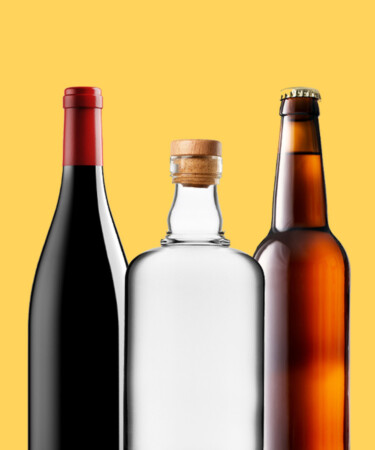Often praised for how it contributes aromas, flavors, and complexity, the process of alcohol aging is most commonly associated with barrels. Synonymous with spirits such as whiskey, rum, and brandy, producers of wine and beer also employ the practice, albeit to a lesser extent.
Beyond prevalence — and indeed the use of barrels — something else sets apart the aging of spirits and that of wine and beer. Namely that when spirits find their final resting and serving vessel (bottles), their evolution and development is all but complete. But for wine and beer, a next stage of aging awaits — bringing with it the development of countless new aromas and flavors (desirable and otherwise). To better understand why this is the case, VinePair spoke with David Keck, master sommelier and winemaker at Stella14.
Whether or not alcohol continues to age in bottle depends on a few elements, most importantly the process in which the beverage was produced and the alcohol content.
In the case of wine and beer, alcohol production occurs through fermentation –– a process during which yeasts convert sugars into alcohol and other organic flavor compounds, including esters. Since yeast can only ferment so much before the alcohol levels become harmful, fermentation in wine and beer yields a product with a relatively low alcohol content. This, Keck notes, allows the organic compounds created during fermentation to further develop (“age”) once bottled.
This can yield both positive and negative results, depending on whether the wine or beer was produced with the intention to age in bottle, and whether or not they spent time in oak before bottling. “Initial barrel aging of beer allows new esters and ethers to form,” Keck says. With more organic compounds, these beers continue to develop in bottle, forming new, complex flavors such as tobacco, vanilla, and dried fruits.
Spirits, on the other hand, are produced first through fermentation and then distillation, which delivers a product with a higher alcohol level than that of fermentation alone. “This essentially acts as a preservative for the liquid and decreases the chemical reactions and occurrence of further changes once it’s been bottled,” Keck says.
The role biochemistry plays during maturation is prominent but, as Keck explains, other factors including the properties of the bottles are also important. “Darker bottles tend to be best for aging because of the effects of light strike, which can increase the occurrence of chemical changes and degrade the liquid inside,” Keck says. For this reason, wines and beers intended for aging should be stored in a dark and temperature-regulated location, like a cellar or wine fridge as opposed to countertops and shelves. On the contrary, spirits are often packaged in clear bottles as damage from light exposure is less of a threat, and can be stored without risk on bar carts and counters.
